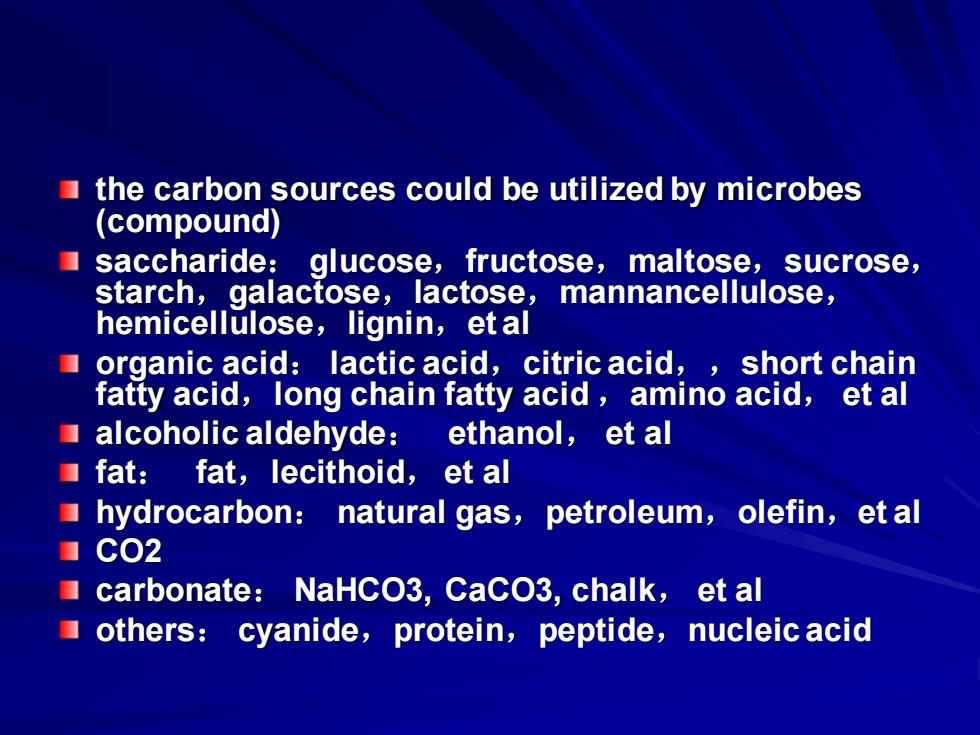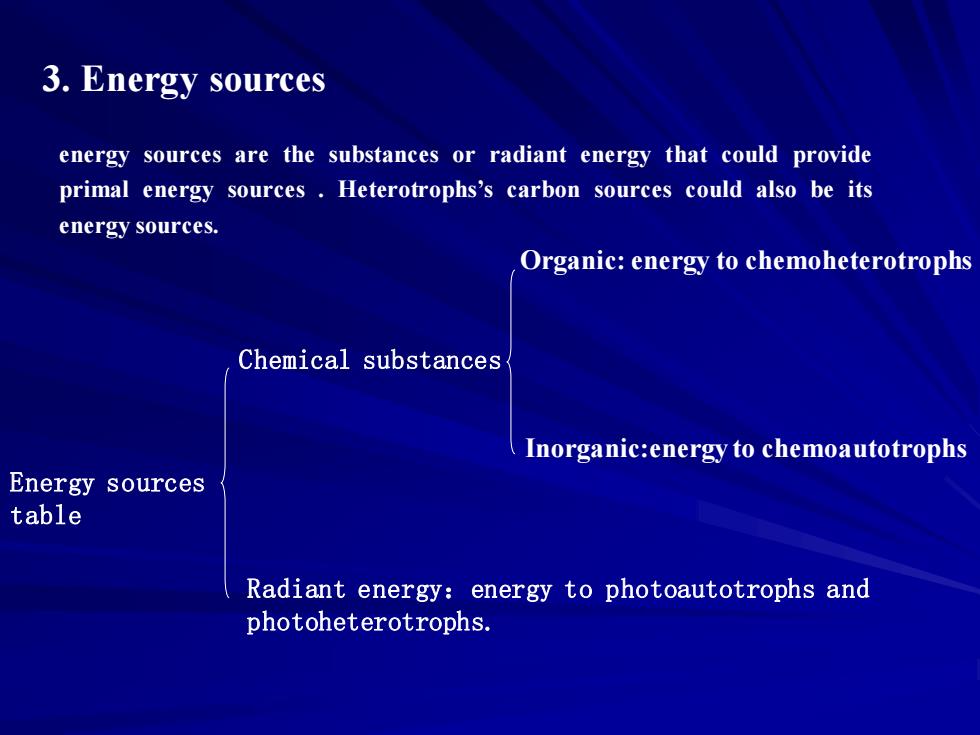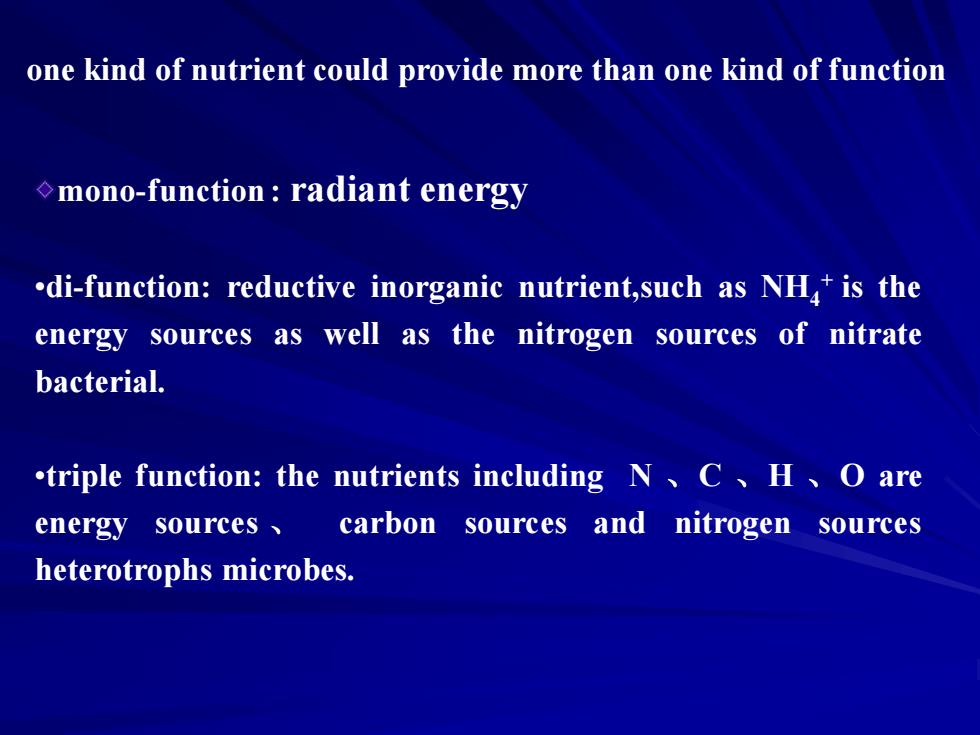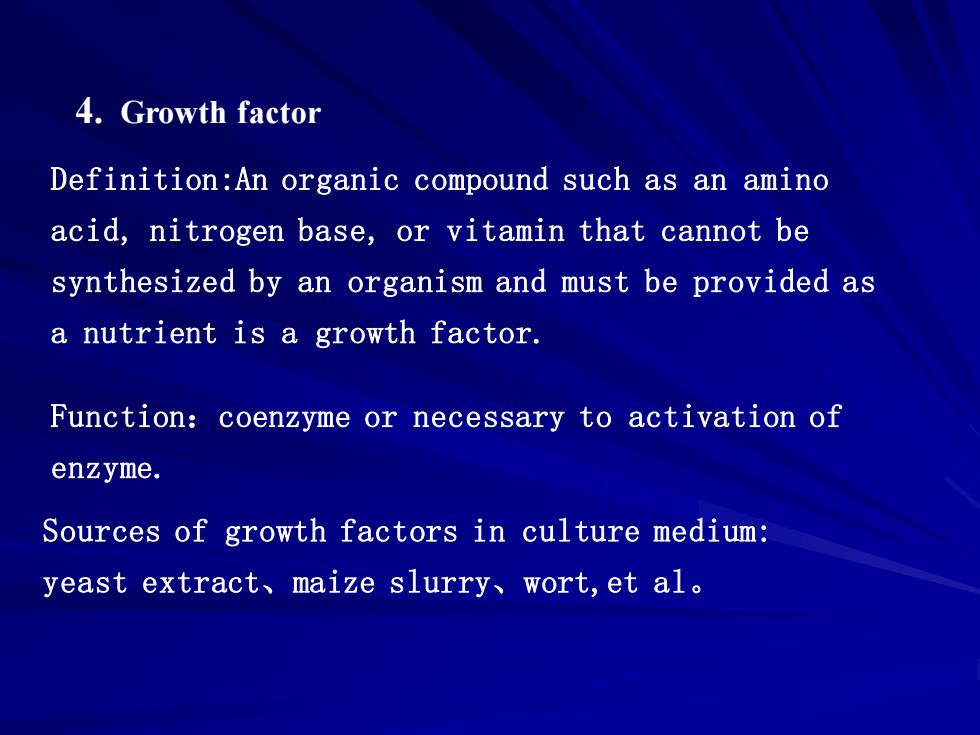
the carbon sources could be utilized by microbes (compound) 3 saccharide:glucose,fructose,maltose,sucrose, starch,galactose,lactose,mannancellulose, hemicellulose,lignin,etal organic acid:lactic acid,citric acid,short chain fatty acid,long chain fatty acid,amino acid,et al alcoholic aldehyde:ethanol,et al fat: fat,lecithoid,et al hydrocarbon:natural gas,petroleum,olefin,et al ■C02 carbonate:NaHCO3,CaCo3,chalk,et al others:cyanide,protein,peptide,nucleic acid
the carbon sources could be utilized by microbes (compound) saccharide: glucose,fructose,maltose,sucrose, starch,galactose,lactose,mannancellulose, hemicellulose,lignin,et al organic acid: lactic acid,citric acid,short chain fatty acid,long chain fatty acid ,amino acid, et al alcoholic aldehyde: ethanol, et al fat: fat,lecithoid, et al hydrocarbon: natural gas,petroleum,olefin,et al CO2 carbonate: NaHCO3, CaCO3, chalk, et al others: cyanide,protein,peptide,nucleic acid

2.Nitrogen sources The nutrient provide the nitrogen element for microbes. Normally,nitrogen source couldn't be used as energy sources. >organic nitrogen sources peptone,soybean powder maize slurry >inorganic nitrogen sources:NHNO3 (NH4)2SO >gas nitrogen sources:N2 in the atmosphere >quick nitrogen sources >slow nitrogen sources
➢organic nitrogen sources :peptone、soybean powder 、maize slurry ➢inorganic nitrogen sources:NH4NO3、(NH4)2SO4 ➢gas nitrogen sources:N2 in the atmosphere 2.Nitrogen sources The nutrient provide the nitrogen element for microbes. Normally,nitrogen source couldn’t be used as energy sources. ➢quick nitrogen sources ➢slow nitrogen sources

3.Energy sources energy sources are the substances or radiant energy that could provide primal energy sources.Heterotrophs's carbon sources could also be its energy sources. Organic:energy to chemoheterotrophs Chemical substances Inorganic:energy to chemoautotrophs Energy sources table Radiant energy:energy to photoautotrophs and photoheterotrophs
energy sources are the substances or radiant energy that could provide primal energy sources . Heterotrophs’s carbon sources could also be its energy sources. 3. Energy sources Inorganic:energy to chemoautotrophs Energy sources table Chemical substances Radiant energy:energy to photoautotrophs and photoheterotrophs. Organic: energy to chemoheterotrophs

one kind of nutrient could provide more than one kind of function mono-function radiant energy *di-function:reductive inorganic nutrient,such as NH+is the energy sources as well as the nitrogen sources of nitrate bacterial. triple function:the nutrients including N、C、H、Oare energy sources carbon sources and nitrogen sources heterotrophs microbes
mono-function : radiant energy •di-function: reductive inorganic nutrient,such as NH4 + is the energy sources as well as the nitrogen sources of nitrate bacterial. •triple function: the nutrients including N 、C 、H 、O are energy sources 、 carbon sources and nitrogen sources heterotrophs microbes. one kind of nutrient could provide more than one kind of function

4.Growth factor Definition:An organic compound such as an amino acid,nitrogen base,or vitamin that cannot be synthesized by an organism and must be provided as a nutrient is a growth factor. Function:coenzyme or necessary to activation of enzyme. Sources of growth factors in culture medium: yeast extract、maize slurry、wort,etal
Definition:An organic compound such as an amino acid, nitrogen base, or vitamin that cannot be synthesized by an organism and must be provided as a nutrient is a growth factor. Sources of growth factors in culture medium: yeast extract、maize slurry、wort,et al。 4. Growth factor Function:coenzyme or necessary to activation of enzyme